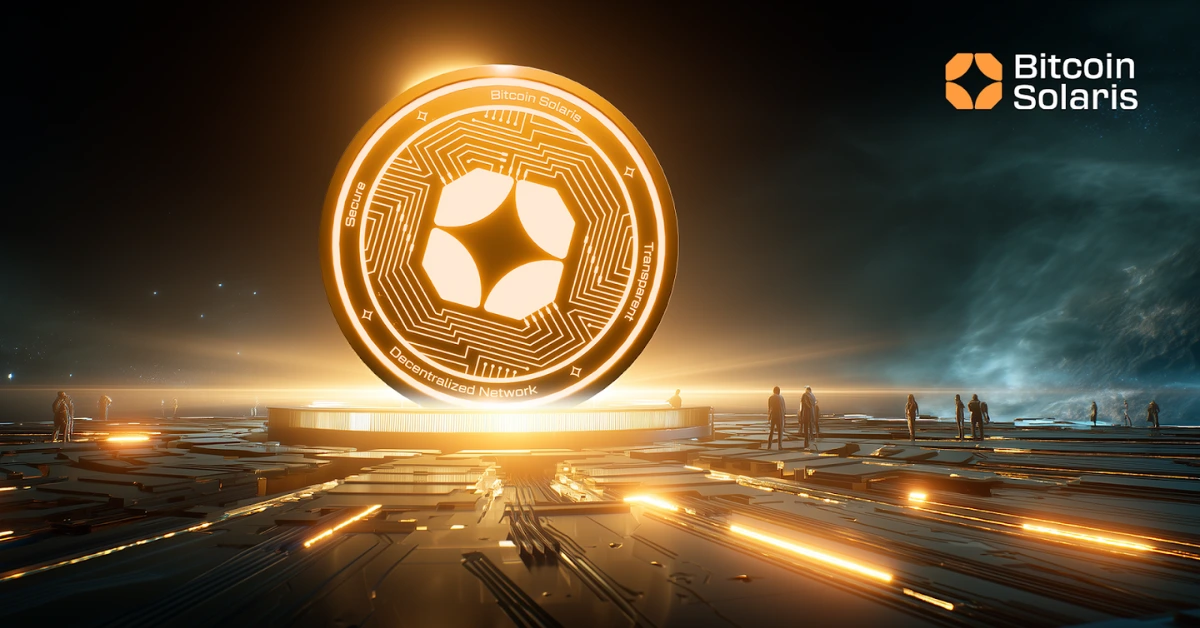
Polygon has led the Layer-2 charge by building fast, scalable solutions on top of Ethereum’s infrastructure. Its rollup models, sidechains, and ZK-based scaling techniques have enabled cheaper transactions and greater speed — without modifying Ethereum itself. But the reliance on bridge mechanics, separate settlement layers, and often complex developer tooling introduces trade-offs.
Now, a different model is getting attention. Bitcoin Solaris, built with dual-layer architecture and an integrated hybrid consensus model, is delivering Ethereum-level programmability and Solana-level performance — without relying on external rollups. With native 10,000 TPS, 2-second finality, and a high-efficiency mining system that works on smartphones, Polygon developers are beginning to take notice — and some are calling it “the technical breakthrough of 2025.”
While Polygon scales Ethereum from the outside, Bitcoin Solaris scales from within. Its system consists of two layers:
Both layers are coordinated by the Helios Consensus Mechanism, which combines all four consensus methods for fast, energy-efficient validation and ordering. The result: finality in 2 seconds, horizontal scalability, and no rollups, bridges, or layer jumps required.
Bridging between Ethereum and its Layer-2 solutions like Polygon still creates points of friction. Users often face delays, higher gas fees when moving assets, and challenges verifying transactions across networks. Developers building on Polygon must also account for syncing issues, cross-layer logic, and the eventual settlement to Ethereum’s mainnet.
Bitcoin Solaris eliminates this complexity. Since smart contracts and base-layer data exist within the same ecosystem — just on different operational layers — developers don’t have to manage bridging logic. Assets are native, execution is instantaneous, and the blockchain itself handles consensus, ordering, and finality in one unified model.
One of Polygon’s strengths is EVM compatibility. But for many builders, the EVM’s limitations around speed and transaction sequencing persist — even on L2.
Bitcoin Solaris delivers its own Solana-compatible smart contract framework, allowing developers to deploy dApps using high-performance, modern tooling. With 10,000 TPS as a baseline and smart contracts processed through PoH-based sequencing, developers can launch apps that scale without bottlenecks or needing external accelerators.
For Polygon devs and others looking for a full breakdown of Bitcoin Solaris’s architecture, check out this in-depth review from Crypto Volt.
Bitcoin Solaris mirrors Bitcoin’s hard cap — 21 million BTC-S tokens. But instead of relying on fixed PoW distribution or dynamic burns, it has allocated 4.2 million tokens (20%) to a public presale.
The presale is currently in Phase 2, with tokens priced at 2 USDT. When this phase ends, the price increases to 3 USDTin Phase 3. There are no lockups, tiers, or hidden mechanics. Just clean distribution in line with the project’s technical rollout.
Moreover, Bitcoin Solaris has passed independent audits from top-tier firms and includes full identity verification:
All smart contract logic and consensus mechanisms are public and verifiable.
Polygon pushed Ethereum’s capabilities forward — but Bitcoin Solaris may be redefining how scaling is handled entirely. By embedding throughput, consensus, and mining directly into its core design, it removes the need for external layers, cross-chain tooling, and validator exclusivity.
For developers seeking true scalability, fast execution, and user inclusion in one chain, Bitcoin Solaris presents a compelling next step.
The content featured on Coinpedia's press release page is provided for informational purposes only. Coinpedia does not endorse, verify, or take responsibility for the accuracy, completeness, or reliability of any press releases or associated materials. Any views, opinions, or statements expressed in these press releases are those of the respective issuers and do not reflect the opinions or positions of Coinpedia. Coinpedia is not liable for any content, products, services, or actions mentioned in the press releases. Readers should independently verify the information before taking any actions related to the subject matter of the releases.
Interest in XRP exchange traded funds is growing quickly after another product received approval. Cboe…
Investors searching for the next high-upside opportunity are now comparing this $0.035 emerging crypto to…
The LINK price remains capped and under bearish pressure despite there being strong signs of…
Strategy, the company led by Bitcoin advocate Michael Saylor, has successfully held its place in…
The XRP price is currently in a decisive standoff, as its price is capped despite…
Story Highlights The Live Price Of XRP Predictions suggest XRP could reach $5.05 by the…